Spatial computing is revolutionizing industries across the globe by integrating virtual and physical realities to optimize workflows, enhance decision-making, and improve customer experiences. From healthcare to entertainment, this cluster delves into how spatial computing impacts specific industries and connects with other technologies like AR & VR, digital twins, and geospatial analytics.
Listen to our podcast: Industry-Specific Applications of Spatial Computing: Transforming Business Landscapes
How Spatial Computing Drives Innovation Across Industries
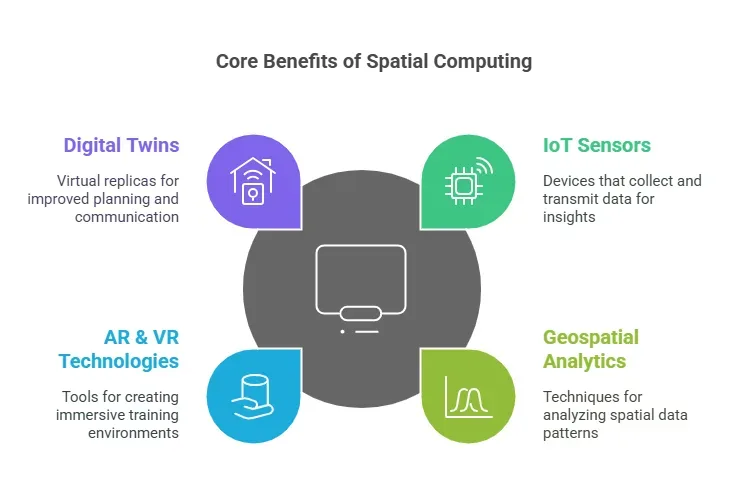
Spatial computing enables businesses to bridge the gap between the digital and physical worlds, creating opportunities for more immersive experiences and operational efficiency.
Core Benefits of Spatial Computing in Industries
- Real-Time Decision Making: Data from IoT sensors and geospatial analytics enable actionable insights.
- Immersive Training & Simulation: AR & VR provide hands-on, realistic training environments.
- Enhanced Collaboration: Digital twins and spatial dashboards improve communication and planning.
For a deeper understanding of how these components interact, check out the Spatial Computing Pillar Blog.
Healthcare Applications
Surgical Simulations and Training
Spatial computing enables AR-assisted surgeries and VR-based training programs, offering:
- Precision: Overlay real-time patient data onto the surgical field.
- Safety: Practice complex procedures in virtual environments.
Discover how AR & VR Innovations are transforming healthcare training and diagnostics.
Patient Monitoring with Digital Twins
By using digital twins to create virtual replicas of patients, healthcare providers can:
- Personalize Treatment: Simulate the effects of different interventions.
- Predict Outcomes: Monitor changes and prevent complications.
For more on the role of virtual replicas, visit Digital Twins & Real-World Simulations.
Entertainment and Gaming
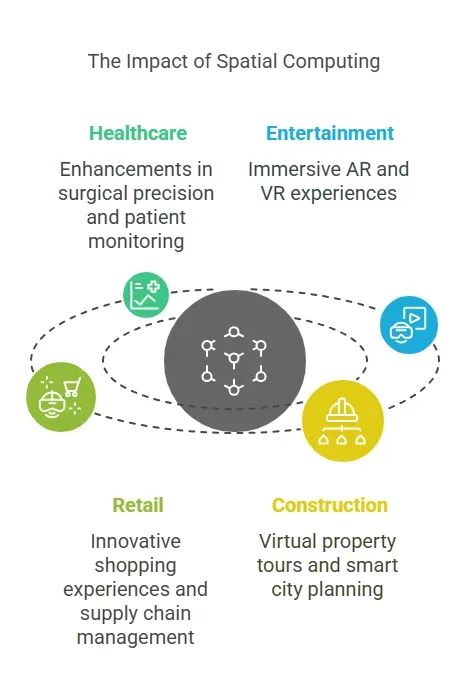
Immersive Experiences with AR & VR
Spatial computing powers next-level entertainment through:
- AR Games: Geospatial data enhances real-world interactions.
- VR Concerts: Offer fully immersive live performances.
To learn how location-based services contribute to these innovations, explore Geospatial Analytics & Location-Based Services.
Theme Parks and Virtual Rides
- Interactive Attractions: Blend physical rides with virtual overlays.
- Customer Engagement: Use AR-enabled apps for enhanced visitor experiences.
Retail and E-Commerce
AR Shopping Experiences
Spatial computing allows customers to:
- Try Before You Buy: Virtually try on clothes or see furniture in their homes.
- Location-Based Promotions: Personalized deals based on geospatial analytics.
See how Geospatial Analytics & Location-Based Services enhance retail strategies with location-based insights.
Inventory and Supply Chain Management
- Digital Twins for Warehousing: Optimize layouts and track real-time inventory.
- Predictive Analytics: Use AI-powered geospatial tools to anticipate demand.
Construction and Real Estate
Virtual Property Tours (H3)
- Immersive VR Walkthroughs: Allow buyers to explore properties remotely.
- AR Remodeling Tools: Visualize renovations in real-time.
Learn more about the integration of virtual environments in AR & VR Innovations.
Smart Cities and Urban Planning (H3)
- Geospatial Data for City Development: Plan infrastructure with real-time analytics.
- Digital Twin Cities: Monitor urban systems like traffic, utilities, and public safety.
Dive into Digital Twins & Real-World Simulations for detailed insights into smart city development.
Challenges in Industry Applications
Scalability and Cost
- High Initial Investment: Implementing spatial computing technologies may be cost-prohibitive for smaller businesses.
- Ongoing Maintenance: Requires continuous updates and skilled personnel.
Ethical and Privacy Concerns
- Data Security: Protect sensitive customer and operational data.
- Ethical AI Use: Ensure fairness and transparency in decision-making processes.
Learn more about responsible practices in our Security, Privacy, and Ethical Considerations cluster.
Future Opportunities
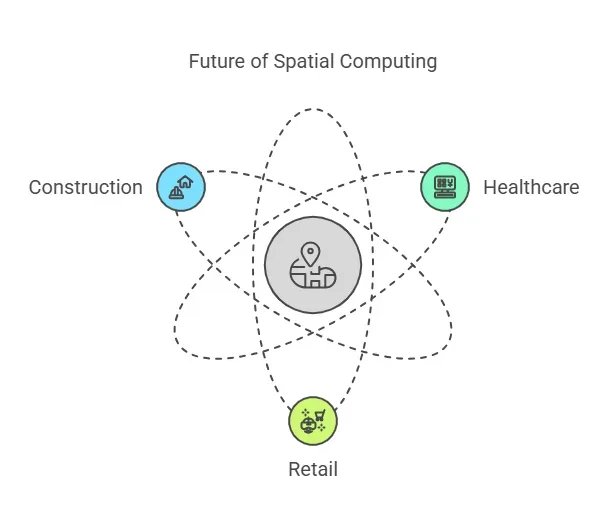
As emerging technologies like 5G, generative AI, and edge computing continue to evolve, spatial computing applications will become even more powerful and accessible.
Expanding Use Cases
- Healthcare: AI-driven patient monitoring and predictive diagnostics.
- Retail: More interactive, personalized shopping experiences.
- Construction: Real-time simulations of large-scale projects.
Explore what’s next in Future Trends & Emerging Tech.
Conclusion
Spatial computing is reshaping industries by offering innovative tools and processes that enhance efficiency, collaboration, and customer engagement. By leveraging technologies like AR, VR, digital twins, and geospatial analytics, businesses across healthcare, entertainment, retail, and construction are achieving unprecedented levels of productivity and creativity. As the technology evolves, industries must embrace spatial computing to remain competitive and future-ready.
FAQ
Q1: Which industries benefit most from spatial computing?
Industries like healthcare, retail, entertainment, and construction are leveraging spatial computing to optimize workflows, improve decision-making, and enhance customer experiences.
Q2: How does spatial computing improve training and simulation?
AR and VR provide immersive, hands-on training environments that replicate real-world scenarios for safer and more effective learning.
Q3: What role do digital twins play in industry applications?
Digital twins create virtual replicas of real-world systems, enabling real-time monitoring, predictive analytics, and optimization across various industries.
Q4: How can small businesses adopt spatial computing?
With the rise of scalable cloud solutions and affordable hardware, small businesses can implement spatial computing for applications like AR-based customer engagement or logistics optimization.
Q5: What are the future trends in industry-specific spatial computing applications?
Emerging trends include AI-driven geospatial analytics, 5G-powered real-time simulations, and advanced VR applications for remote collaboration and training.


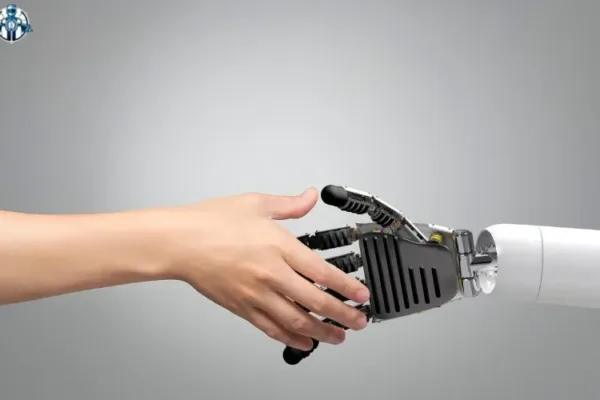


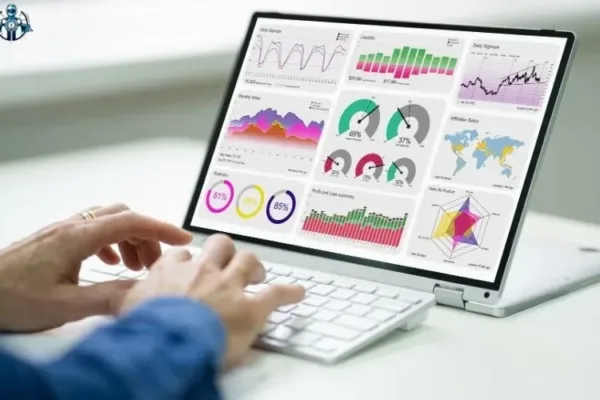


6 thoughts on “Spatial Computing & Generative AI: Transforming the Future of Digital Experiences”